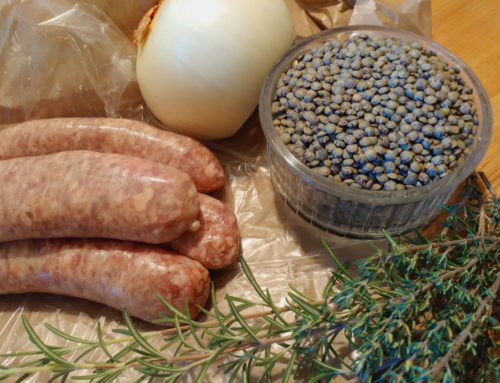It happened for the umpteenth time a couple of days ago. Part of the daily routine, keeping up on news of the day, checking out a restaurant that just opened in my neighborhood, I’m scanning the menu online….then, BAM! One of my all-time biggest menu peeves: “Wild Mushroom Quesadilla: crimini mushroom, roasted poblano, chevre…..” Blood pressure goes up, I get distracted-feeling and fidgety.
I’ve had it up to here (gestures toward top of head) with restaurants trying to sell us cultivated mushrooms as wild. I tweeted that day that I planned to start fining restaurants $10 every time they try to pass off a commercially-grown mushroom as a wild one, and that tweet got favorited and RT’d more than any of mine before. Clearly this irks others just as much. I can’t, and don’t, hold the grudge against that one establishment alone. It’s a pervasive problem that’s been irking me for a decade or more.
Cremini (crimini? I guess either is fine) might sound all fancy, but they’re nothing more than a brown-capped variation on the incredibly common (I almost said “wildly common” but that would have been too, too much) white button mushroom. And the portobello mushroom is, in turn, an overgrown cremini.
News flash: none of these is a wild mushroom. Nor is an enoki mushroom nor much of the regular oyster mushrooms in retail, though at least they do grow in the wild. Shiitakes have been cultivated in Japan for a century or more. I don’t know when the last truly wild shiitake showed up in a market, but I doubt one ever did in the U.S.
I’ve seen some restaurants who do serve both wild and cultivated mushrooms list the latter as “tame” to differentiate. At Lark in Seattle, where a signature dish is simple but delectable sautéed mushrooms with garlic, olive oil and sea salt, the term is “half wild” to allow for a mix from both camps. Call them “exotic” or “gourmet” or by the variety, anything you want — but don’t call them wild if
they weren’t harvested from their natural environment in the wild.
So the theme of today’s post is Truth in Menus. Say what you mean and mean what you say. Don’t mislead. And basically just know your stuff, know what you’re cooking.
One of the more interesting menu missteps I can remember was at a kinda upscale burger place in Vegas. There was a lamb burger that sounded great, with harissa. Which I love, have had many times, have made a batch or two myself. You know, the beloved hot-pepper condiment of North Africa? The burger comes, no hint of heat, no evidence of harissa. When the server comes around to ask how things are, I say, “fine, but there’s no harissa on the burger.” “Yes there is.” “No, there’s not.” “Yes, it’s that green sauce on top.” “Green sauce? it’s a red chile paste.” “Oh, the chef makes his with parsley.”
That may not have been the exact repartee, but it was the crux of the conversation. Harissa, but made with parsley instead. So, basically, not harissa. (Unless there’s some exotic variant I’m not aware of.)
I asked friends about other peeves, which ranged from “risotto” made with quinoa, nary a grain of rice in sight, to excessive use of hand-harvested-this and hand-selected-that. (I always roll my eyes at things like “hand-aged cheese”; sorry but your hands contribute very little, the cheese and its environment are doing all the work.) Another grumbles about “homemade whatever” wondering “whose home was it made in?” Maybe “housemade” is a compromise there, a more generic reference to the establishment.
Other gripes are back in that wild arena, wild rice that’s mostly bland everyday stuff, wild arugula (really? looks & tastes exactly like the stuff I buy at the store….). And of course spelling, that’s a universal problem, a particular shout-out for carmelized.
For years I’ve fantasized about not just riling up about menu missteps, but actually whipping out a red pencil and making necessary corrections. I’ve done my fair share of editing after all. It’s a public service, right? Not to shame, but to educate. I’m getting old enough now, I might just do it.
If you’ve got a “oh, it’s harissa, but made with parsley {said with a smile}” story of your own, or some other misleading-menu peeve to share, I’d love to hear it.





Hey, love the shout-out for “carmelized”! And here’s to more truth in menu-writing–or at least using spell-check.
“Authentic pork Osso Bucco”
Ordered “Risotto” and what came was steamed rice, leaning toward Minute Rice. Pah!
I actually have whipped out the red pencil on a restaurant menu. We stumbled into a soft opening once and I asked if they wanted feedback on the painful, painful menu. They said absolutely, so I obliged.
In general I’m not fond of over-reaching. I was in a German restaurant recently that labeled some schnitzel as “hand breaded and pan fried in butter.” When it came it was clearly a frozen low-end Sysco variety cutlet that was deep fried and covered with an equally Sysco-packaged “gravy”. Ugh. If I’d only known, I would have just had beer and cabbage for dinner.
Another time I was sure my dining partner would throttle the waitress who, upon polite questioning, arrogantly declared that in *her* restaurant the Pizza Margherita was served with an Alfredo sauce base and chicken. (But no basil or tomatoes.)